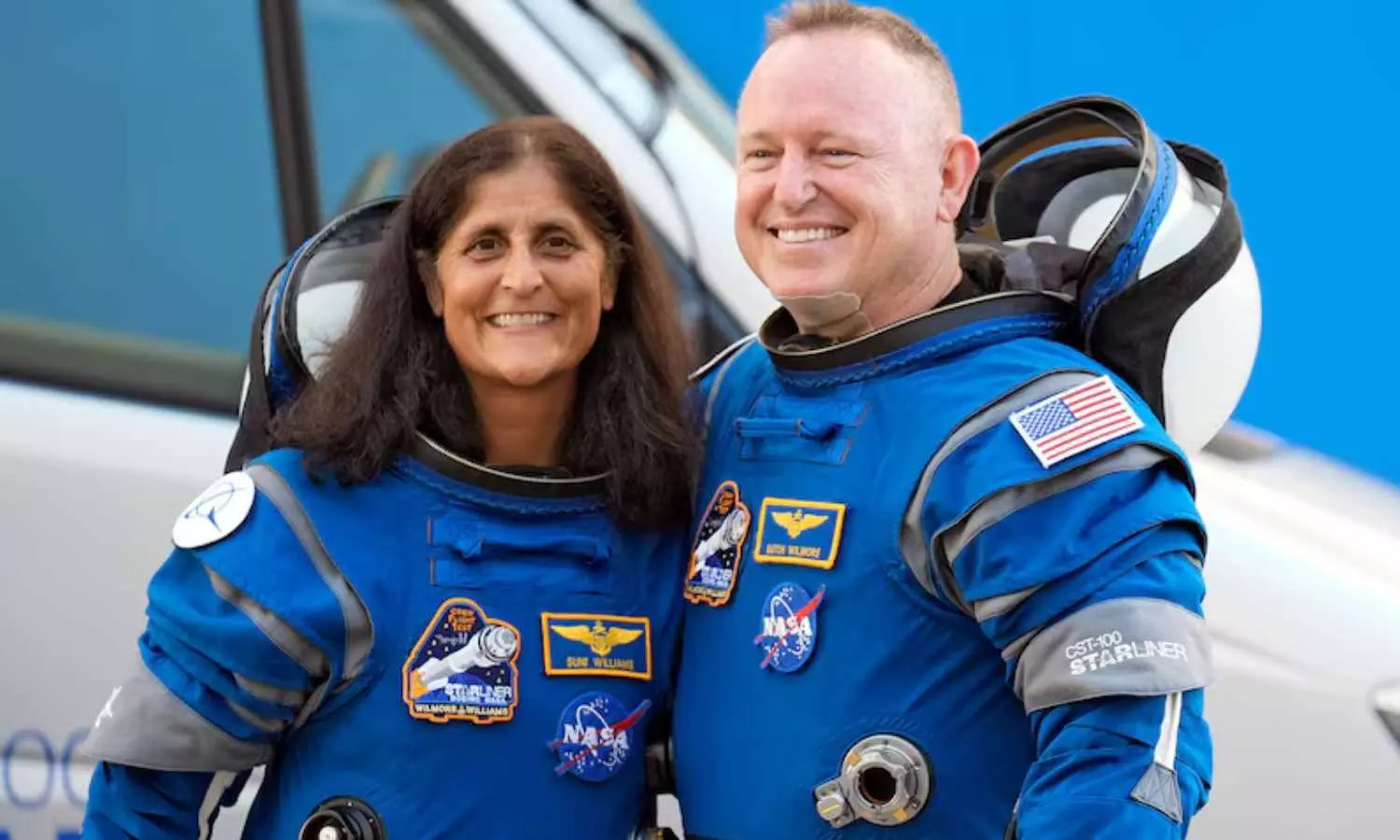Explained: What Changes Does the Human Body Witness After 9 Months in Space?
Astronauts encounter a lot of challenges, including bone and muscle deterioration, radiation exposure, and vision impairment while indulging in long-duration missions.
Explained: What Changes Does the Human Body Witness After 9 Months in Space?

Astronauts encounter a lot of challenges, including bone and muscle deterioration, radiation exposure, and vision impairment while indulging in long-duration missions.
As US astronauts Butch Wilmore and Suni Williams are all set to return to Earth after nine months in the International Space Station (ISS), few of the health risks have been well-documented in the media.
Exercise: A solution?
Though their mission has received a lot of attention, Wilmore and Williams’ nine-month stay is ‘par for the course,’ said Rihana Bokhari, an assistant professor at the Center for Space Medicine at Baylor College.
ISS missions typically last for six months, but some astronauts are required to stay up to a year, and researchers are confident in their ability to maintain the crew’s health for the required duration.
Exercises like weightlifting strengthens bones and muscles but even basic movements on Earth resists gravity, an element missing in orbit.
Astronauts use three exercising machines on the ISS, which includes a 2009-installed resistance device. The machine simulates free weights using vacuum tubes and flywheel cables.
A two-hour workout also keeps astronauts in shape. “The best results that we have to show that we're being very effective is that we don't really have a fracture problem in astronauts when they return to the ground,” though bone loss is still detectable on scans, Bokhari told AFP.
Astronauts also lose balance while getting accustomed to the conditions of Earth, added Emmanuel Urquieta, vice chair of Aerospace Medicine at the University of Central Florida.
“This happens to every single astronaut, even those who go into space just for a few days,” he told AFP, as they work to rebuild trust in their inner ear.
Another challenge that astronauts face is the “fluid shift”, which is the distribution of bodily fluids toward the head in microgravity. This in turn increases calcium levels in urine, raising the risk of kidney stones.
Fluid shifts can also lead to increased intracranial pressure, altering the shape of the eyeball and causing spaceflight-associated neuro-ocular syndrome (SANS).
But in at least one case, the effects have been beneficial. “had a pretty severe case of SANS,” NASA astronaut Jessica Meir said before the latest launch.
“When I launched, I wore glasses and contacts, but due to globe flattening, I now have 20/15 vision -- most expensive corrective surgery possible. Thank you, taxpayers."
Managing radiation
Radiation levels on the ISS are higher than the ground as it passes through the Van Allen radiation belt. However, Earth’s magnetic field still provides significant protection.
Future space probes could provide some warning time for high-radiation events, such coronal mass ejections -- plasma clouds from the Sun -- but cosmic radiation remains unpredictable.
“Shielding is best done with heavy materials like lead or water, but you need vast quantities of it,” said Eggl, of University of Illinois Urbana-Champaign.
Artificial gravity, created by rotating spacecraft frames, could help astronauts stay functional upon arrival after a nine-month journey to Mars.
Preventing infighting among teams will be critical, said Joseph Keebler, a psychologist at Embry-Riddle Aeronautical University.
“Imagine being stuck in a van with anybody for three years: these vessels aren't that big, there's no privacy, there's no backyard to go to,” he said.
“I really commend astronauts that commit to this. It's an unfathomable job.”

